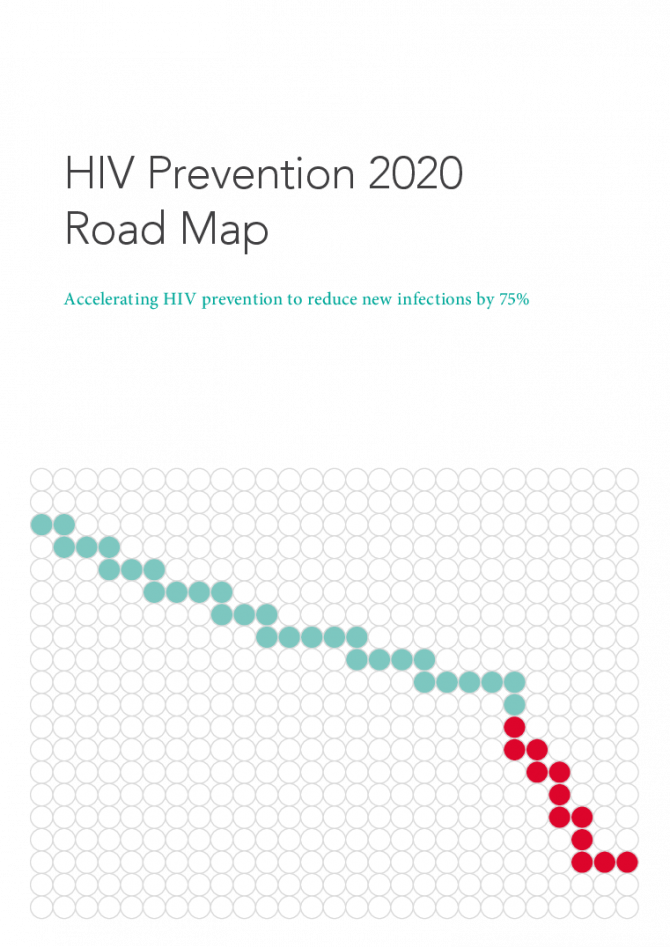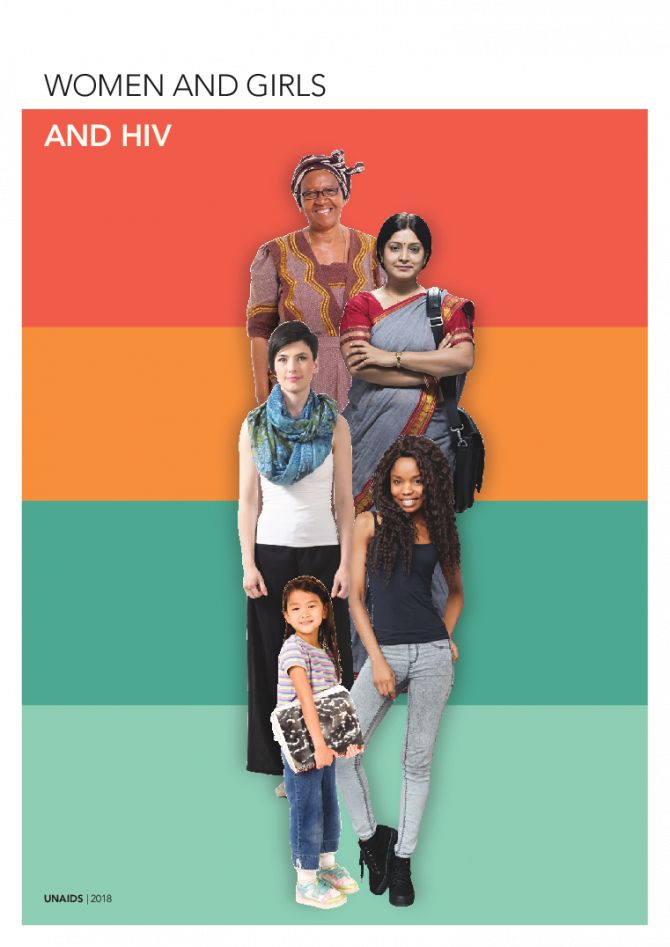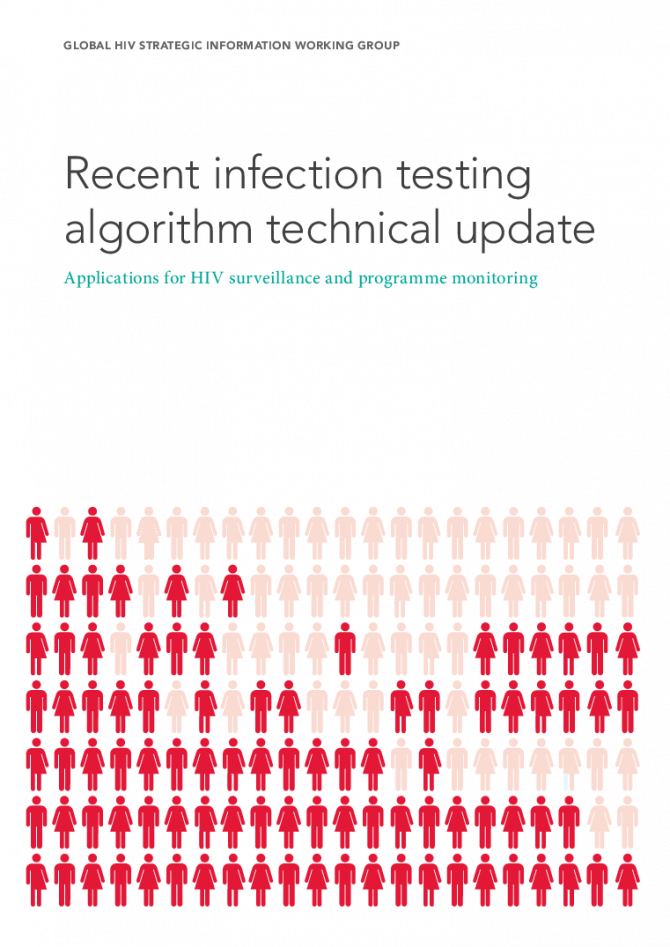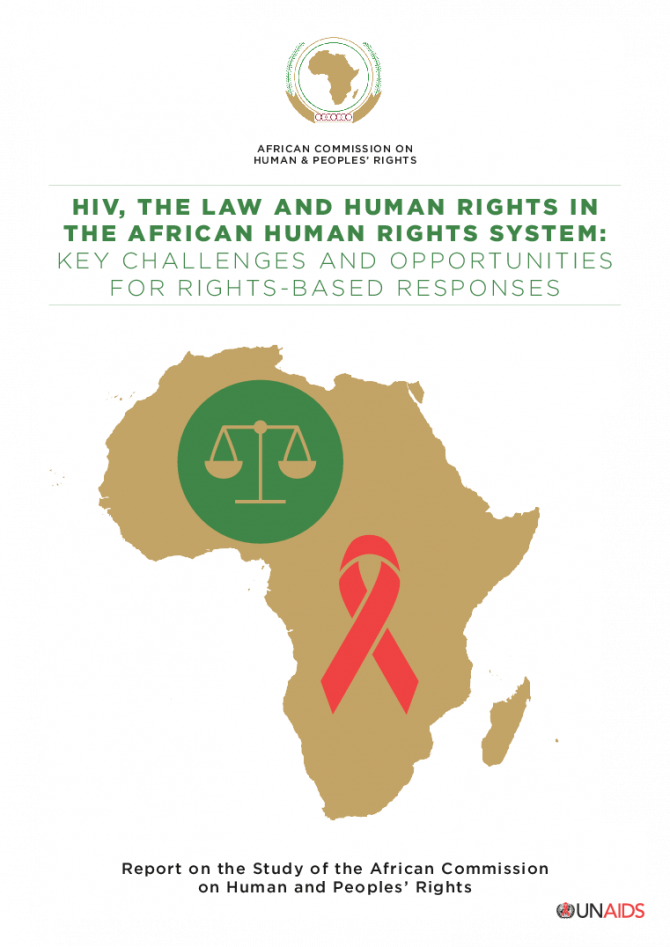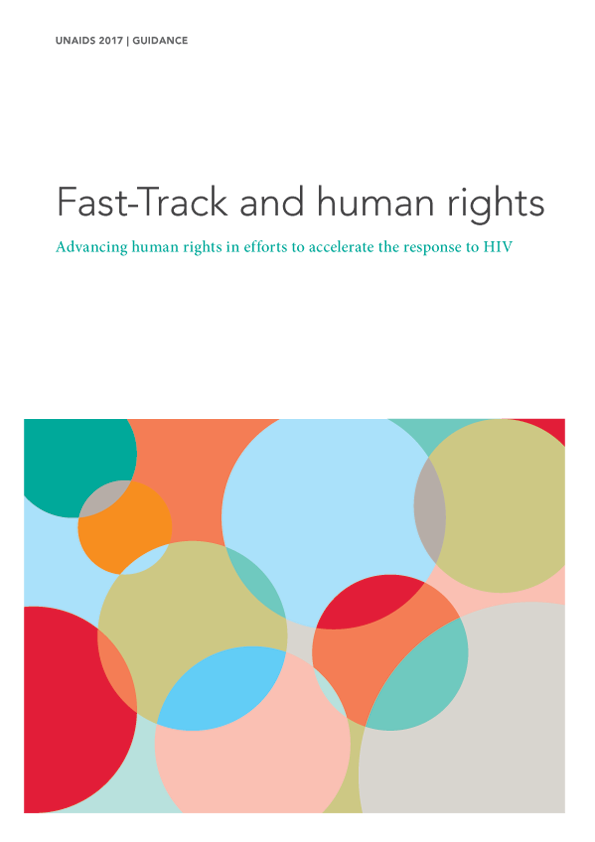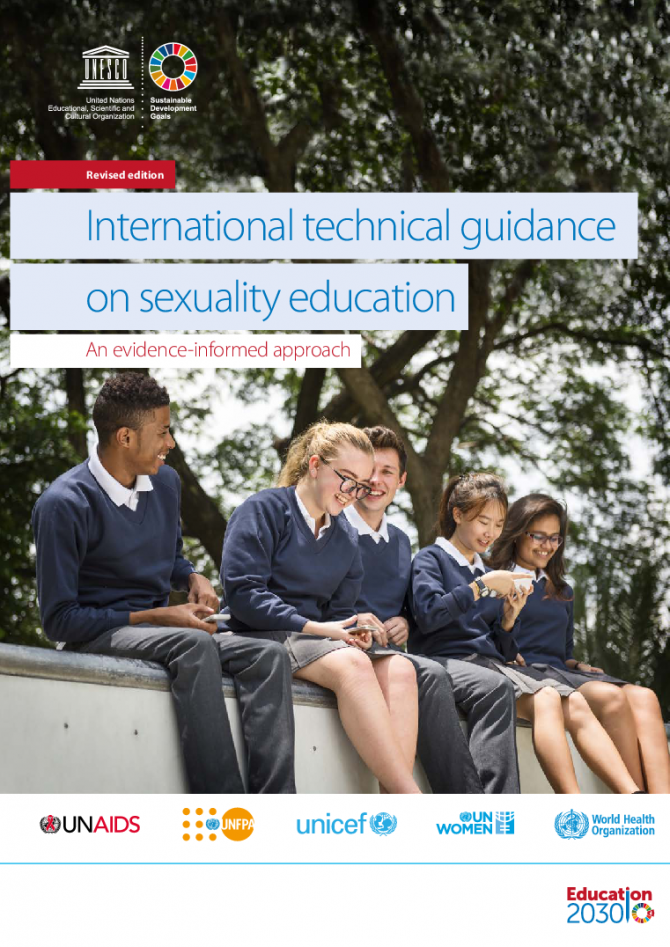Documents
Breathe — Let’s end TB and AIDS by 2030
23 March 2018
“It has never been more urgent for us to come together to end HIV and tuberculosis. We achieve the most when we work together, using all of our strengths, harnessing all of our collective potential to end HIV and tuberculosis for a healthier world as part of the Sustainable Development Goals.” —Michel Sisibé, Executive Director of UNAIDS
Documents
HIV Prevention 2020 Road Map — Accelerating HIV prevention to reduce new infections by 75%
10 October 2017
The Road Map was prepared through a consultative process that brought together more than 40 countries and organizations, including civil society organizations, networks of people living with HIV, faith-based organizations, networks of key populations and international organizations and foundations, to chart the way forward to achieving global HIV prevention goals by 2020. Country assessments and national consultations were organized in participating countries towards reaffirming national leadership for HIV prevention, reviewing progress and discussing accelerated action for prevention. Thematic consultations and case study reviews were also conducted to develop key elements of the Road Map, most of which are also contained in a global results framework first proposed in a journal article in 2016.
Documents
Women and girls and HIV
07 March 2018
We cannot stand by and allow the quality of life of women and girls to be held back and their hopes and dreams for the future to slip away. We must work collectively to close the gaps that continue to leave women and girls behind. Ending the AIDS epidemic by 2030 depends on advancing a social justice agenda that demands access to education, employment, health services, justice and political representation, free from discrimination and violence.
Documents
Recent infection testing algorithm technical update — Applications for HIV surveillance and programme monitoring
01 March 2018
This technical update provides public health officials with guidance on applying HIV incidence assays and testing algorithms for recent HIV infection in order to monitor the HIV epidemic and assess the impact of interventions. A major theme of this update is the importance of calibrating two of the key performance characteristics of recent testing infections algorithms—mean duration of recent infection and false recent ratio— to account for the context in which the testing is being done. This technical update also describes several emerging use cases in the application of recent infection testing algorithms and tests, including those for individual-level use. A final section on further research directions is provided to highlight areas that still require investigation.
Documents
Zero Discrimination Day 2018
23 February 2018
No one should ever be discriminated against because of their age, sex, gender identity, sexual orientation, disability, race, ethnicity, language, health (including HIV) status, geographical location, economic status or migrant status, or for any other reason. Unfortunately, however, discrimination continues to undermine efforts to achieve a more just and equitable world. Many people face discrimination every day based on who they are or what they do.
Documents
HIV, the Law and Human Rights in the African Human Rights System: Key Challenges and Opportunities for Rights-Based Responses — Report on the Study of the African Commission on Human and Peoples’ Rights
31 January 2018
The present study is a significant contribution to efforts to advance rights-based responses to HIV in Africa and globally. UNAIDS is privileged to have contributed to this report, and we look forward to working with the African Commission, States, civil society and other partners to promote this study and support the implementation of its recommendations, which constitute a milestone in our efforts to end the AIDS epidemic as a public health threat by 2030 and to leave no one behind.
Documents
Fast-Track and human rights — Advancing human rights in efforts to accelerate the response to HIV
27 May 2017
This document offers guidance on why and how efforts to Fast-Track HIV prevention, testing and treatment services can and should be grounded in human rights. Beyond being an imperative in themselves, human rights principles and approaches are critical to addressing barriers to HIV services and to achieving HIV targets. Human rights principles and approaches will help maximize the reach and impact of HIV prevention, testing and treatment programmes. They also will help address potential human rights challenges and prevent abuses that may occur in the context of urgent efforts to Fast- Track the achievement of HIV prevention, testing and treatment targets.
Documents
Confronting discrimination
02 October 2017
This report compiles the latest body of evidence on how stigma and discrimination create barriers across the HIV prevention, testing and treatment cascades and reduce the impact of the AIDS response. The report also brings together best practices on confronting stigma and discrimination, providing a valuable resource for programme managers, policy-makers, health-care providers and communities. The evidence shows that the establishment of people-centred service delivery models, supportive legal and policy frameworks, monitoring and enforcement mechanisms, and sensitization training for health-care workers and other duty bearers can promote inclusion and increase access to services.
Documents
International technical guidance on sexuality education
10 January 2018
The International technical guidance on sexuality education (the Guidance) was developed to assist education, health and other relevant authorities in the development and implementation of school-based and out-of-school comprehensive sexuality education programmes and materials. It is immediately relevant for government education ministers and their professional staff, including curriculum developers, school principals and teachers. Non-governmental organizations (NGOs), youth workers and young people can also use the document as an advocacy or accountability tool, for example by sharing it with decision-makers as a guide to best practices and/or for its integration within broader agendas, such as the SDGs. The Guidance is also useful for anyone involved in the design, delivery and evaluation of sexuality education programmes both in and out of school, including stakeholders working on quality education, sexual and reproductive health (SRH), adolescent health and/or gender equality, among other issues.


